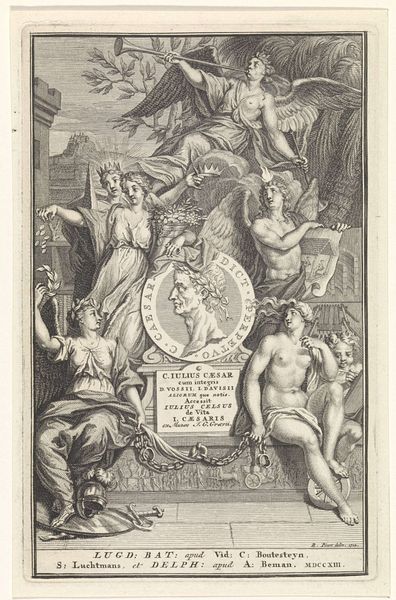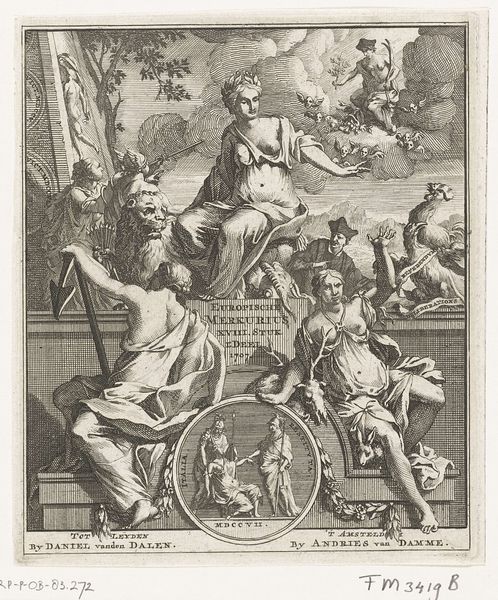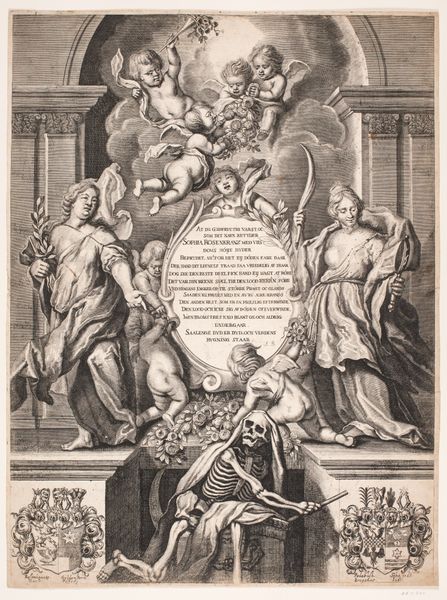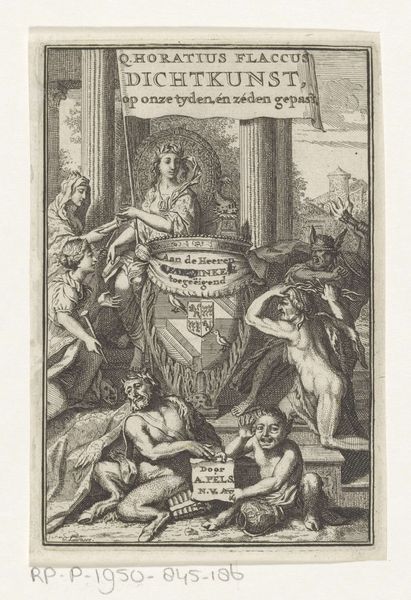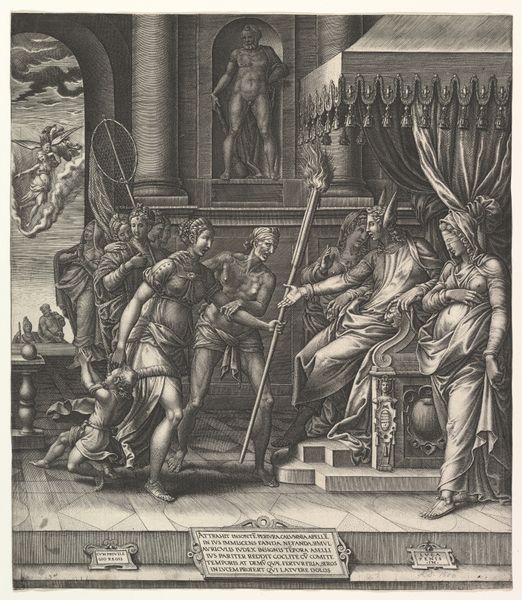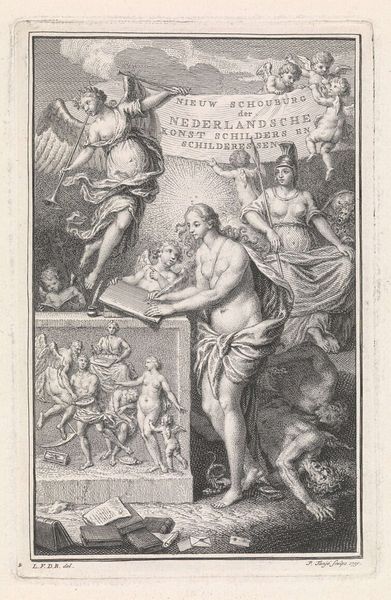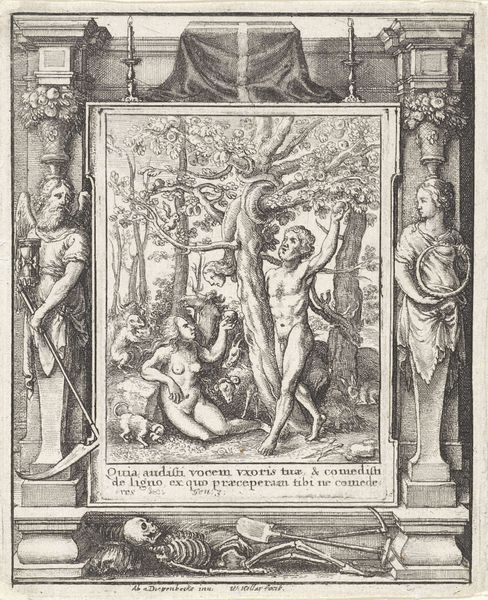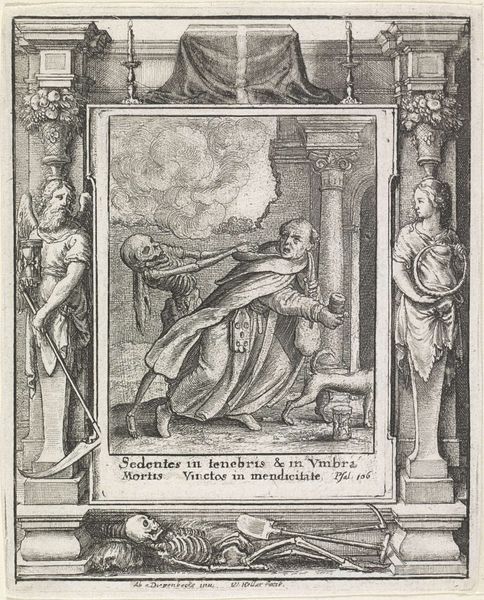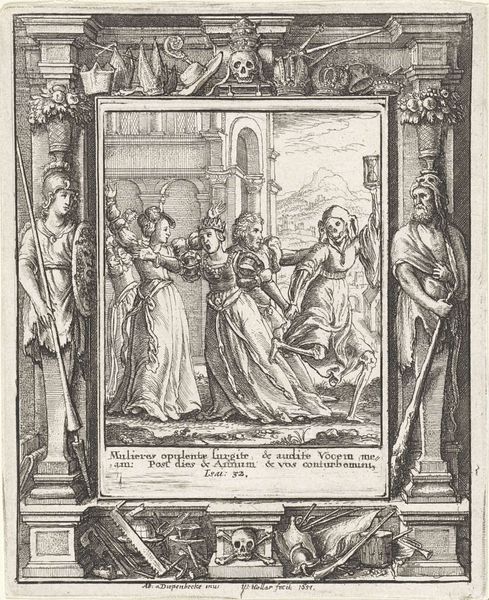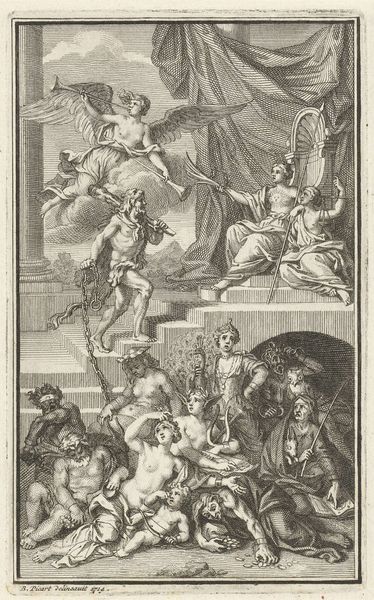
Allegorische portret van Francisco de Castel Rodrigo bij zijn vertrek als gouverneur, 1668 1668
0:00
0:00
hubertquellinus
Rijksmuseum
engraving
#
portrait
#
allegory
#
baroque
#
history-painting
#
engraving
Dimensions: height 545 mm, width 346 mm
Copyright: Rijks Museum: Open Domain
This allegorical portrait of Francisco de Castel Rodrigo, made in 1668 by Hubert Quellinus, is an engraving, a printmaking technique that involves incising an image onto a metal plate, inking the plate, and then pressing it onto paper. The stark contrast between the lines and the white background emphasizes the symbolic imagery: Castel Rodrigo, in full armor, stands framed by allegorical figures like Mercury and Pallas, representing commerce and wisdom. Beneath him, reclining figures with water jugs symbolize the rivers and prosperity he governed. Above, portraits and heraldic symbols further elevate his status. Engraving is laborious; each line meticulously carved. This intensive, skilled process reflects the hierarchical society it depicts. Prints like these were luxury items, showcasing power and prestige through both subject and production. The fine detail and complexity signal a society that valued craftsmanship and its ability to translate status into a tangible, reproducible form. By understanding the printmaking process and the social context, we gain a richer appreciation of how even seemingly simple materials can be imbued with layers of meaning and significance.
Comments
No comments
Be the first to comment and join the conversation on the ultimate creative platform.

